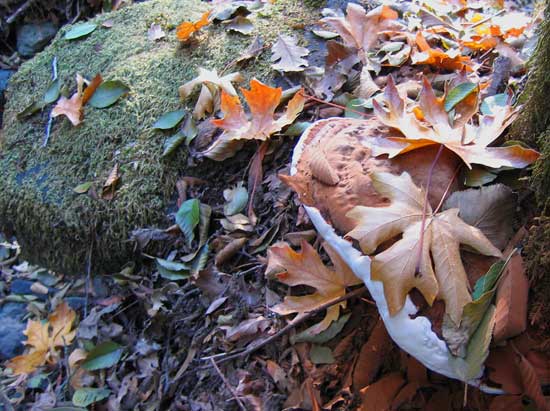 |
| Oyster mushrooms like these are a common sight along creeks in fall and winter. |
 |
Even a little rain provides enough moisture
for wild mushrooms to sprout and grow. |
 |
| Oyster mushrooms grow in a broad variety of shapes and sizes. |
 |
| Often fully expressing themselves along lengths of rotting logs. |
 |
| Some in growth patterns that conform to the contours of their host. |
 |
| More than a hand's width broad and tall, they strain to reach the light. |
 |
Rotting logs can host scores of oyster mushrooms
in various stages of development. |
 |
| Beautifully arranging themselves to make the most of the forest's filtered sunlight. |
 |
They are also found high up on the bark of
living trees where they thrive in great numbers. |
 |
| In addition to oyster mushrooms, other varieties of fungi favor creek-fed canyons. |
 |
| Artist Conks grow near the base of living trees and slowly expand for years. |
 |
Their tough, wood-like texture deters insects
and provides insulation in all weather. |
 |
Fallen leaves and other creek-side debris
decompose to provide nutrients for mushroom spores. |
 |
Honey mushrooms like this one are often
found growing very near the water's edge. |
 |
| Decomposing leaves become compost for next year's crop of wild mushrooms. |
 |
| A pair of Puff Balls erupt through the rich compost of the forest floor. |
 |
|
|
















